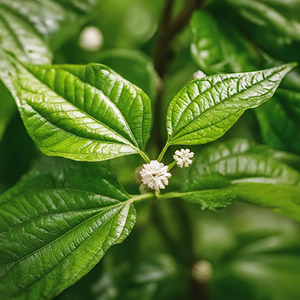Contents
Black pepper benefits for the digestive system were known by the people of India from ancient times. Alexander the Great was the first to introduce this spice to Europe in the 4th century B.C. At present, black pepper is the most used spice.

Black Pepper Scientific Facts
- Scientific Name: Piper nigrum L.
- French: Poivrier commun, poivrier noir.
- Spanish: Pimienta Negra, blanca.
- Environment: Native to India and tropical Southeast Asian countries, it is currently cultivated in all tropical regions of the globe.
- Description: This is a climbing shrub of the Piperaceae family. Its fruit is red berries that, once dried, make pepper grains.
- Parts of the plant used medicinally: The dried fruits, with their rind (black pepper) or without it (white pepper).
Black Pepper Benefits

Pepper grains contain 2 percent of the essence, formed by several hydrocarbons, from 2 to 4 percent of the resin, and a spicy flavored alkaloid, peppericine, mainly found in the back (black pepper is more potent than white pepper due to this fact). Pepper has the following properties.
- Digestive and stomach invigorating—In small doses, pepper increases the production of digestive juices (saliva, gastric juice, pancreatic juice, etc.) by producing a mild irritation on the mucosa. It is also carminative (reduces the formation of gas). However, in high doses, it is an irritant.
- Febrifuge.
- Parasite killer – Pepper kills intestinal parasites.
- Mild aphrodisiac.
Warning
When taken in excess, pepper causes intense irritation of the digestive and urinary mucous membranes (even resulting in blood in the urine) and increases blood pressure. Its use is formally advised against gastritis, gastric and duodenal ulcers, pancreatitis, hemorrhoids, and hypertension.

Matico
In Chile and Argentina, a pepper species (Piper angustifolium L.) called matico contains a bitter component and an essence as an infusion (10 grams per liter) is used for digestive, especially in the treatment of gastric and duodenal ulcers; drinking from three to five cups daily. In external applications, it is used to wash wounds (decoction with 50 grams of plant per liter of water) due to its cicatrizant properties.
How to use Pepper
- Pepper is used as a seasoning and mixed with food.
DISCLAIMER: All content on this website is presented solely for educational and informational objectives. Do not rely on the information provided as a replacement for advice, diagnosis, or treatment from a qualified medical expert. If you are pregnant, nursing, or have any preexisting medical concerns, talk to your doctor before using any herbal or natural medicines.
REFERENCES
- George D. Pamplona-Roger, M.D. “Encyclopedia of Medicinal Plants.” George D. Pamplona-Roger, M.D. Encyclopedia of Medicinal Plants. Ed. Francesc X. Gelabert. Vols. 1 San Fernando de Henares: Editorial Safeliz, 2000. 370. Print.
- WebMD: https://www.webmd.com/diet/health-benefits-black-pepper
- Healthline: https://www.healthline.com/nutrition/black-pepper-benefits
- McCormick Science Institute: https://www.mccormickscienceinstitute.com/our-research/scientific-overviews/msi-funded-paper-potential-health-benefits-of-black-pepper
